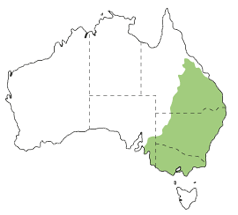SPECIES INFORMATION
IntroductionText version (.docx 32kB) This is the most commonly seen turtle species in south-eastern Australia. Physical and behavioural characteristics
Environmental requirements for keeping in captivity
|
Natural distribution
Feeding and nutrition
Considerations when keeping turtles in schools
|
ReferencesCare (.pdf 380 kB) Green, D. (2000) Keeping long-necked turtles. Australian Reptile Keeper Publications |
|


